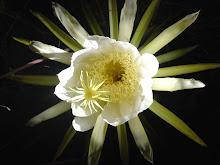SEARCHING TEAM FOR ONCO BIO TECHNOLOGY
under Dr Abdulla foundation calicut
chairman:Dr ShafiAbdullaZuhoori Bsc,BHMS,BIMS,MSc,Phd
Physician:Dr AbdulRasheedSwadri BIMS,BUMS
Chief technician:Mujib MSc(bio tech)
Chief Scientist:Dr NousherKhan MSc,PhD
Academic consultant:Dr Ashok mohan MSc,PhD
-------------------------------------------------------------------------
Oncology is the branch of medicine dealing with tumors (cancer). A medical professional who practices oncology is an oncologist. The term originates from the Greek onkos (ονκος), meaning bulk, mass, or tumor, and the suffix -logy, meaning "study of".
Oncology is concerned with:
The diagnosis of any cancer in a person
Therapy (e.g., surgery, chemotherapy, radiotherapy and other modalities)
Follow-up of cancer patients after successful treatment
Palliative care of patients with terminal malignancies
Ethical questions surrounding cancer care
Screening efforts:
of populations, or
of the relatives of patients (in types of cancer that are thought to have a hereditary basis, such as breast cancer)
PROPHETIC MEDICINE
Many cancer patients seek extra help from complementary and alternative therapies, which fall outside the scope of conventional medicine. Many complementary therapies do not have a firm scientific or evidential base.but the system of prophetic medicine activating the scientific and technological methods.
Nonetheless, many aspects of the patients life that fall outside of the scope of conventional western medicine may be addressed very effectively by alternative means. Alternative means can help the patient and the patients family cope with the prospect of death, depression, anorexia, day to day emotions and functions such as sleeping and eating, and other palliative care.
Complementary therapies are diverse and multifaceted. They can range from free of charge to exorbitantly expensive, ineffective, to beneficial, to downright hazardous. As a general rule, complementary or alternative therapy is only as effective as one obey it to be
BIO TECHNOLOGY
Biotechnology is technology based on biology, especially when used in agriculture, food science, and medicine. United Nations Convention on Biological Diversity defines biotechnology as:
"Any technological application that uses biological systems, dead organisms, or derivatives thereof, to make or modify products or processes for specific use."
Biotechnology is often used to refer to genetic engineering technology of the 21st century, however the term encompasses a wider range and history of procedures for modifying biological organisms according to the needs of humanity, going back to the initial modifications of native plants into improved food crops through artificial selection and hybridization. Bioengineering is the science upon which all biotechnological applications are based. With the development of new approaches and modern techniques, traditional biotechnology industries are also acquiring new horizons enabling them to improve the quality of their products and increase the productivity of their systems.
Before 1971, the term, biotechnology, was primarily used within the agricultural industries. Since the 1970s, it began to be used by the Western scientific establishment to refer to laboratory-based techniques being developed in biological research, such as recombinant DNA or tissue culture-based processes, or horizontal gene transfer in living plants, using vectors such as the Agrobacterium bacteria to transfer DNA into a host organism. In fact, the term may be used in a much broader sense to describe the whole range of methods, both ancient and modern, used to manipulate organic materials for purposes including the production of food or other substances derived from living things. So the term could be defined as, "The application of indigenous and/or scientific knowledge to the management of (parts of) microorganisms, or of cells and tissues of higher organisms, so that these supply goods and services of use to the food industry and its consumers.
Biotechnology combines disciplines like genetics, Microbiology,molecular biology, biochemistry, embryology, and cell biology, which are in turn linked to practical disciplines like chemical engineering, information technology, and biorobotics. Patho-biotechnology describes the exploitation of pathogens or pathogen derived compounds for beneficial effect.
CANCER CURE PROJECT WITH CAMEL PRODUCTS
BIO CHEMICAL STUDIES IN CAMELS FOR SWADRI CANCER MEDICINES
The aim of this study was to clarify the normal values and thechanges of haemogram, some biochemical parameters, and some hormonesin both athletic and non-athletic camels. The racing tests werecarried out in El-Arish, Egypt, on twenty-seven apparently clinicallyhealthy athletic and non-athletic camels. Blood samples were collectedaseptically from jugular vein before and after a 6-km camel racecompetition. The results showed a significant increase in red cellcounts, haemoglobin concentration and haematocrit value in bothathletics and non-athletic camels after the 6-km racing, while thederived red cell indices remained without significant changes. Serumconcentration of K+ increased significantly in post racing athleticsand non-athletic camels, while Na+ increased significantly innon-athletic camels only. HCO3- and Ca2+ decreased significantly whilechloride remained without significant changes in both athletic andnon-athletic camels. In contrast to other athletic animal species, theserum glucose concentration increased significantly in the post-racingcamels. Similarly, there was significant increase in blood lactate,total protein, albumin and globulin in both athletics and non-athleticcamels. Nonesterified fatty acids increased significantly in athleticcamels while it decreased significantly in non-athletic camels.Furthermore, both serum cortisol and urine vainylmandelic acidincreased significantly in post racing camels. In conclusion, racingcamels showed haematological, electrolyte, and metabolic responses tosuch race similar to those reported in other animal species exceptthat of glucose. On comparison, between the athletic and non-athleticcamels, the most interesting observations recorded in this study werethe following: the high increase in plasma Na+ concentration innon-athletic camels versus no changes in athletic camels; the highlysignificant decrease in calculated strong ion difference innon-athletic camels versus no change in athletic camels; and whilenonesterified fatty acids decreased significantly in non-athleticcamels, they increased in athletic camels.
